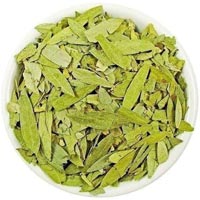Many TCM practitioners in the West consider the year 2005 to be a ‘cupping therapy year’! For several months following Friday, 9 July 2005, cupping therapy was the subject of worldwide media attention. This was entirely due to Oscar winning actress Gwyneth Paltrow, who decided to reveal her newly acquired cupping therapy marks at a film festival in New York by wearing a low cut dress which showed the circular marks across her back and shoulders. Newspapers, radio stations and TV networks in the USA and across Europe gave extensive coverage to cupping therapy and speculated wildly about why she was having this treatment! Some cynical comments were made but in general it has been a positive and informative approach. This helped to stimulate a healthy public debate in natural health and complementary medicine circles, simultaneously encouraging many TCM practitioners who were previously reluctant to apply this method of treatment, to study further and improve their cupping skills.
Today, as more people seek complementary and alternative therapies to deal with their health problems, therapies such as acupuncture, herbal medicine, aromatherapy, reflexology, chiropractic, osteopathy, homoeopathy, Tui-Na and massage have become popular. Public awareness and education have also changed, from seeing these as ‘quack’ remedies to more respectable alternative treatments. In both America and Europe the education of the complementary therapist has taken on a new meaning. Here in the West, most acupuncture schools and colleges offer 3-4-year ‘accredited’ acupuncture courses, with optional studies in China. Many alternative therapy organizations have set up self-regulatory bodies, ensuring high educational standards and at the same time seeking better understanding and recognition by the health system and the general public.
Unfortunately, most acupuncture school curricula in the West do not include enough time for the teaching of cupping therapy. However, in the last few years since my first book was published in late 1999, I have taught cupping therapy through various TCM schools and private lectures in England, Germany, Norway, Sweden, Denmark, Holland, Turkey, the Czech Republic and Switzerland. I am also very pleased to see a genuine enthusiasm towards cupping therapy among the new generation of TCM practitioners. In parallel with this new-found interest, quite a number of internet websites are also offering online cupping therapy information. It is estimated that over 100 000 acupuncture practitioners today work outside China, practicing Chinese Medicine as a whole. It is clear that cupping therapy taught and used properly on its own, or alongside various tactile therapies, can positively influence and speed up the body’s natural healing process.


